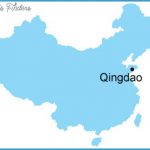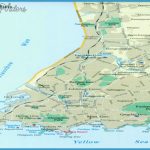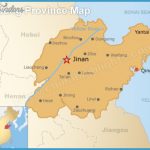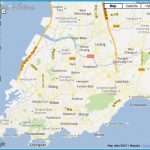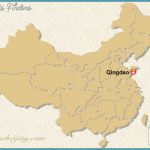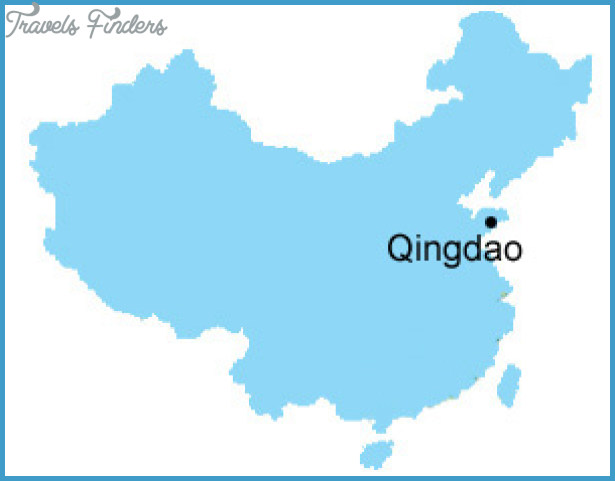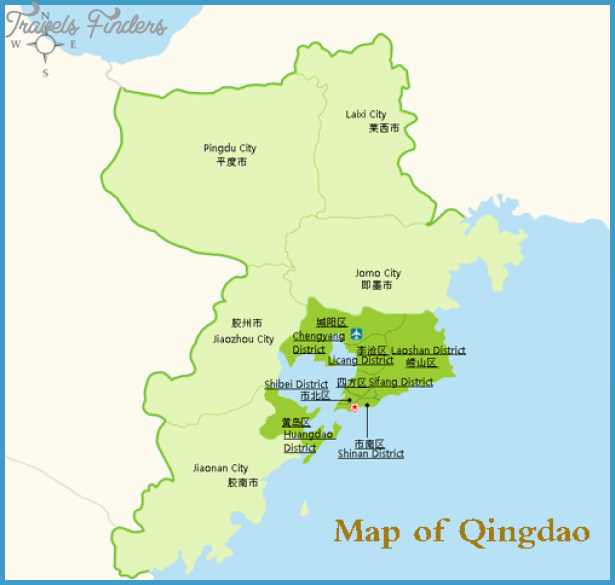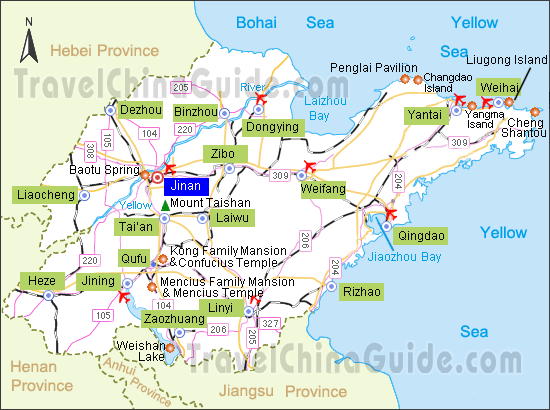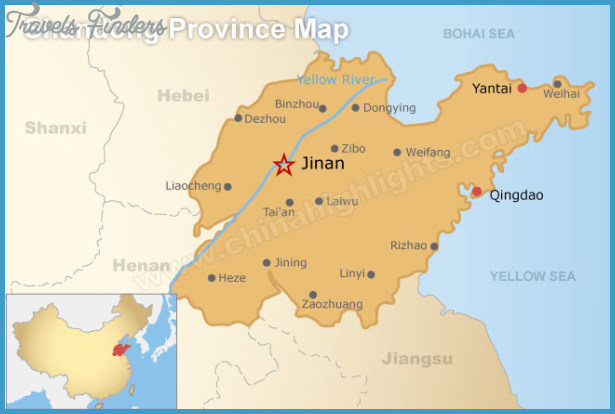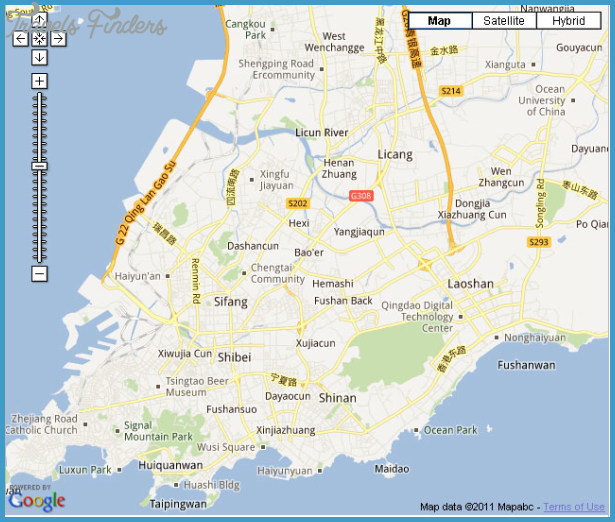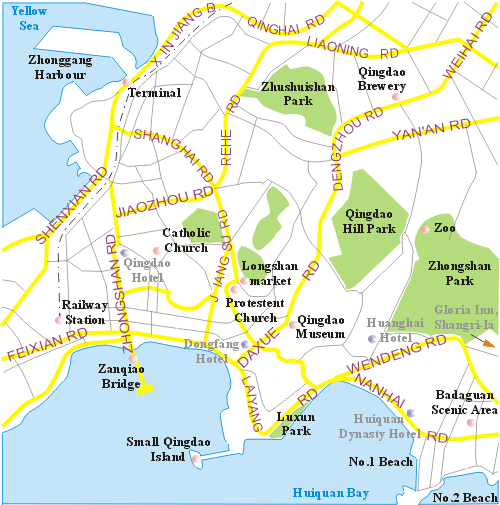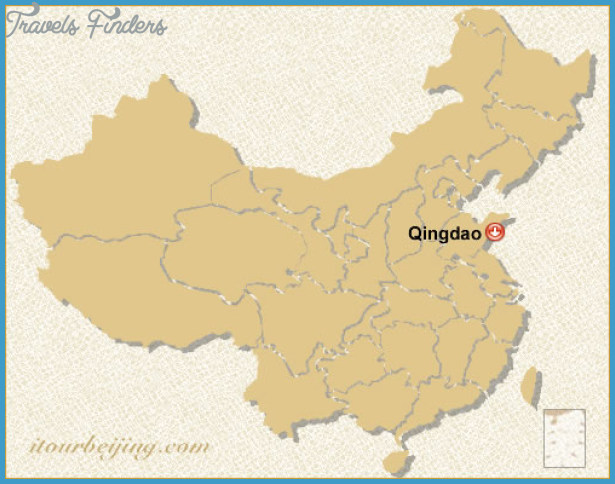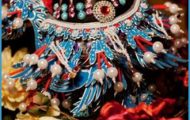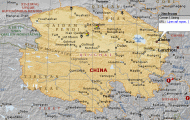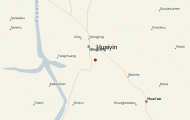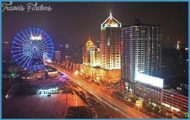Province: Shandong
Altitude: 77m/252ft. Area: 244sq.km/94sq. miles Population: 1,180,000 (conurbation 6,410,000)
Qingdao is situated on the Yellow Sea, in the east of Shandong province, at 120°14’E and 36°06’N.
There are rail and air links with Beijing, Shanghai, Canton, Nanjing, Xi’an, Jinan and other Chinese cities. Qingdao can also be reached by sea from Shanghai and Dalian.
The town boasts one of China’s major sea ports, w,hich is free of ice all the year round, and it is also the chief industrial centre of Shandong province.
Qingdao is known for its beer (Qingdao Pijiu, produced by a German brewery which was established here in the 1930s) and the mineral water from Mount Laoshan (Laoshan Kuanghuanshui).
Qingdao’s mild climate and beautiful, clean beaches attract both Chinese and foreign tourists.
Qingdao (“Green Island”) was a small trading port as long ago as the Song era (960-1279). From 1874 onwards it grew in strategic importance as first fortifications and then military harbour installations were built. After 1898, when Germany enforced a 99-year lease for the Jiazhou region, Qingdao developed into a “European” town, and signs of this are still to be seen today. The town was occupied by the Japanese during the First World War and was promised to them when the war ended; this led to the formation of the May 4th Protest Movement in 1919. It was 1922 before Qingdao was returned to China.
Since the 1950s Qingdao has shown rapid industrial development.
This market in the town centre is renowned for the rich array of goods on sale. It is estimated that some 200,000 people visit it every day. As well as Qingdao beer and Laoshan mineral water, old furniture, second-hand bicycles, straw baskets and much, much more is here to tempt the buyer.
The pier built in 1891 in Qingdao Bay in the south of the town is 440m/480yd long and 10m/11yd wide.
At the southern end of the pier stands the octagonal Pavilion of the Rebounding Waves, built in classical Chinese style. Inside, a spiral staircase leads up to the upper storey.
The pier and this pavilion are regarded as Qingdao’s emblems.
This park, named after the writer Lu Xun (see Famous People) lies in the south of the town on a rocky promontory close by the sea, and gives a wonderful view over the water.
The Marine Museum in Lu Xun Gongyuan Park is divided into two sections. In one section the exhibits cover the development of marine creatures and plant life, while the other houses an aquarium.
South ofthe museum a pier leads to the Little Green Isle, on which stands a lighthouse 15m/50ft high.
In all there are seven bathing beaches, the most popular being those numbered 1, 2 and 3.
The largest is Beach No. 1, in the south of the town, which is 580m/640yd long. No. 2 is a little way further east, where more than 80 hotels and health clinics lie in a row. About 1 km/1100yd further east still is Beach No. 3, which is not as large as the other two.
Sun-Yat-sen Park, Qingdao’s largest, lies in the east ofthe town.
The beautiful plants which grow there make it a favourite place for outings.
Zhanshan Temple, also situated in the east of the town and encircled by hills, was built in 1934 and is the only Buddhist edifice in Qingdao. In the
Mount Laoshan, around which countless legends have been woven, lies 30km/19 miles north-east of Qingdao and falls steeply away towards the coast. Its tallest peak, Laoding, reaches a height of 1133m/3720ft. The mountain, rich in mineral water springs, displays bizarre rock formations, waterfalls and caves.
Many years ago it was revered as the “Home of Eternal Life”, where grew magic herbs which could cure all known diseases and make man immortal. It was in order to search for these wondrous plants that the Qin Emperor Shi Huangdi (259-210 b.c.) and the Han Emperor Wudi (156-87 b.c.) climbed this mountain. In the 8th c. the Tang Emperor Xuanzong sent two high officials to find and collect the magical herbs and to prepare for him the Elixir of Life. After the 10th c. more and more Taoist monasteries sprung up here, but most of them were destroyed in later years.
The Taoist Temple of Supreme Purity, or Lower Temple (Xia Gong), stands near the coast at the south-eastern foot of Mount Laoshan. It dates originally from the Song period (960-1279), but the present buildings were built during the reign ofthe Emperor Wanli (1573-1620).
The two stone tablets on the walls of the Hall of the Three Emperors (Sanhuang Dian) contain two inscriptions, one by Kublai Khan and the other by Genghis Khan. There is a superb view of the sea from here.
The Temple of Great Purity, or Upper Temple (Shang Gong) – built between 1297 and 1307 but later extended several times – lies up above the Temple of Supreme Purity, on the south-eastern slope of Mount Laoshan. In front of the temple stand some ginkgo trees which are several hundred years old.
South ofthe Temple of Great Purity the Longtan Pu Waterfall plunges down from a height of 20m/66ft.
The Temple of Supreme Peace on the northern slopes of Mount Laoshan was built in the Song period (960-1279) and has been restored several times. It is known for the strange stone formations which encircle it.
The Temple of Huayan Si, on the eastern slopes, is the region’s only Buddhist temple. The original mid-17th c. building was soon destroyed during subsequent wars and was rebuilt a number of years later.
The Jiushui river, some 12km/71/2 miles long, snakes its way through the northern part of Mount Laoshan. Waterfalls, rock formations and monuments combine to make this region quite idyllic.

